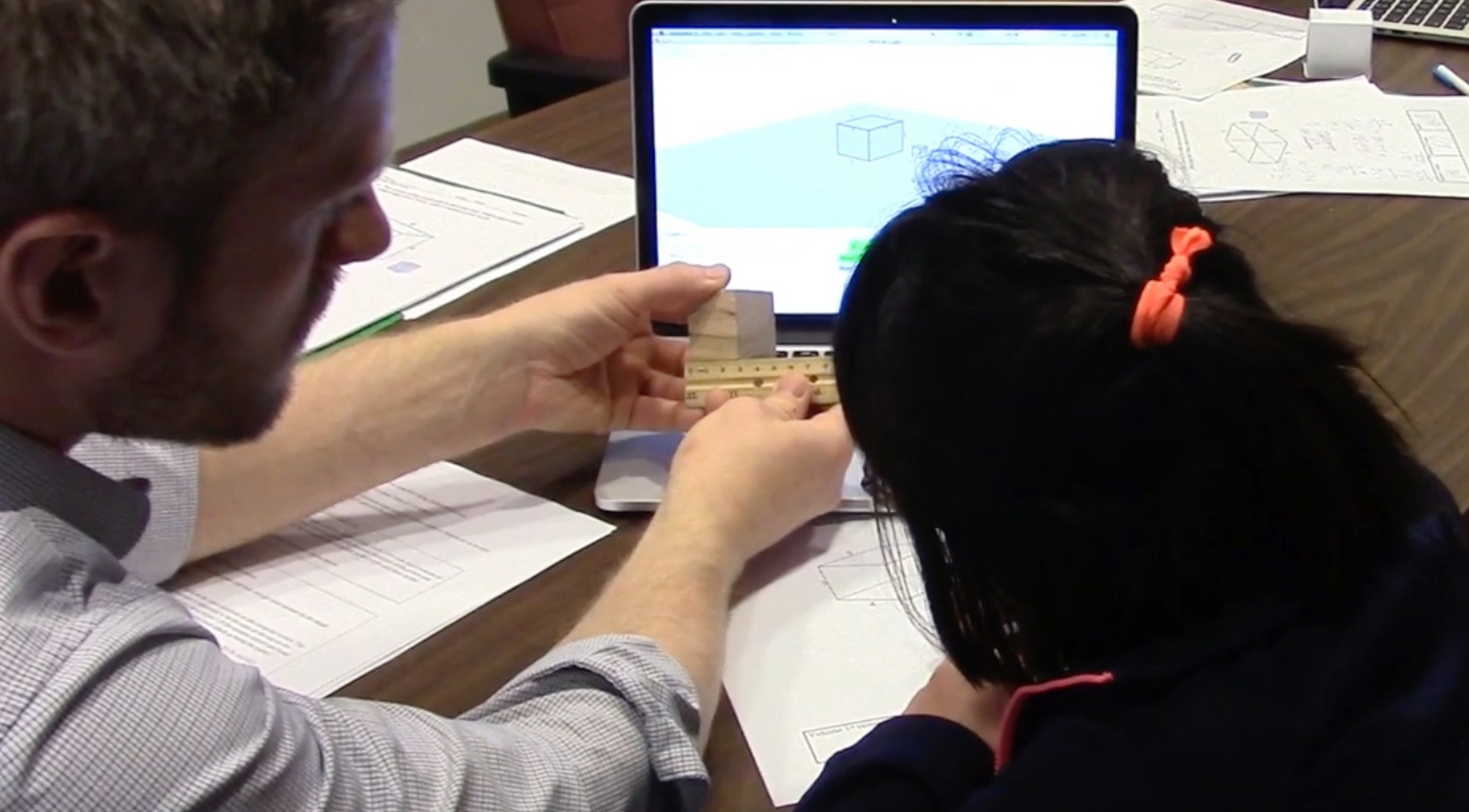For some students, math can be elusive. Once a concept is taught, it is difficult to determine the moment it is learned or “sticks” for students. Two Department of Mathematics faculty members at Illinois State University are working with the Children’s Measurement Project (CMP) in the hopes of providing mathematics teachers with interventions to understand when and how students truly catch on to math concepts.
“What is interesting for me is when you have great evidence that students have learned something, and you are so happy,” said Associate Professor of Mathematics Craig Cullen. “Then you come back and see them again in two weeks, or in six months, and it’s gone. I think it’s important to work through that and make it known to the learning community.”
Cullen and Professor of Mathematics Jeffrey Barrett have been working in conjunction with faculty now at the University of Denver on the National Science Foundation-funded CMP for the past four years. The goal of the CMP is to understand how children process mathematical concepts, and provide teachers with insights on techniques and interventions that help students.
“When you tell teachers and principals that you study measurement, you know they have a little ruler in their mind’s eye. And they think, well, my kids are all pretty good at that,” said Barrett, who is also the associate director of Illinois State’s Center for Math, Science and Technology. “But measurement is so much more an engaging and conceptual thing. Half of science is measurement, while the other half is theory. And we’re interested in helping kids navigate the paths between these interwoven fields.”
Barrett and Cullen have followed the progress of a small group of elementary and middle-school students year after year to understand how they learn measurement concepts. “There are many more studies that do a slice in time, and they don’t tell us how much kids can stretch up, or learn with support or scaffolding,” said Barrett, who calls their process the “long-story” approach.
“You can watch a kid learn something in a 10-minute period, but you don’t know if that has had any long-term impact on that student,” agreed Cullen, who worked as a high-school math teacher in the suburbs of Chicago for six years before returning to Illinois State for his doctorate, and staying as a faculty member. “If you do a longitudinal study, or long-story approach, you can watch that student develop, and go beyond localized learning. It gives you an opportunity to see patterns in the student’s thinking.”
A recent video explaining the work of the CMP was honored by the National Science Foundation. One scene in the video captures students standing over circles made of colorful thread. As an eighth-grade student unspools the threads of one circle, they line up to make a right triangle, showing students seeing the connection between the shapes. Cullen noted that even after students mastered the idea behind this type of measurement, there was still a gap in knowledge. “They took to the visual argument, they believed in it, they trusted it, but they couldn’t explain it to their teachers,” said Cullen. “They struggled to provide justification for it. So we knew we had more work to do.”
Opening students’ eyes to the possibilities of measurement is an added bonus to the research, said Barrett, who said those eyes can grow wide when he asks them to look at two swirling lines and tell him which is more curvy. “Curviness doesn’t have a measurement scale we all know about, so they had to think, and talk and put something together,” said Barrett of the middle-school students. “That shows the kind of conceptual notions we explore in measurement.”
Barrett and Cullen hold workshops for area teachers to talk about their research, and provide new ideas, interventions, and resources. While working with CMP during his doctoral studies, Illinois State doctoral candidate Ted Rupnow developed open source (free) software that enables teachers to introduce three-dimensional measurement to grades 2-4 students. “It took a little work in terms of design, but we use it with grades 2-4 kids, and find it pretty successful,” said Barrett. “The goal is to have resources teachers can use with little or no money.”
The input of teachers has always been important to Barrett and Cullen. “Ultimately, we do this work for students and teachers, so it helps immensely to have their input,” said Barrett. Though several articles have been accepted for publication, Cullen added the vital work is helping children understand the diversity of measurement. “Measurement is not just a procedural, skill-based activity, there is a lot of deep mathematics involved,” he said. “And if you build up peoples’ understanding of measurement, and focus on the conceptual understanding, it can help support a lot of other mathematics, and a long-term interest in them.”




